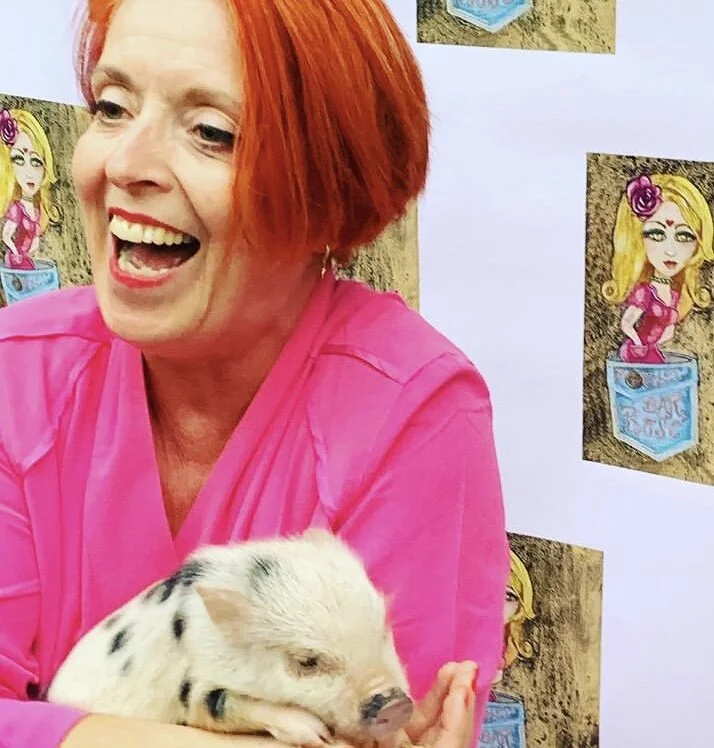And Just Like That…Sex and The City Is Back
Ruth Walker is an award-winning journalist and editor whose career spans 30 years, in both digital and print media. In 2015, she moved from Edinburgh to New York, after being hand-picked to edit and build the audience of a high-quality, hyperlocal magazine. She lives in Hell's Kitchen with a roommate and a collection of designer heels she never wears. So, who better to ask about the new Sex and The City reboot, And Just Like That…
Courtesy of New Line Cinema
In 1998 – when Sex and The City screened the first of its 94 episodes across six life-altering, trend-setting seasons – the world was an almost unrecognisable place. The World Trade Center still defined the New York City skyline. Google – whose Manhattan real estate footprint now includes several city blocks in Chelsea worth more than $2bn – hadn't even been invented yet. But Viagra had. And a 24-year-old White House intern by the name of Monica Lewinsky was being slut-shamed by the press and the public following a relationship that has only recently been reexamined through the lens of #metoo.
Can we talk about the anti-Semitic tropes, too? The gay stereotypes, celebration of toxic relationships, and cis-gender white privilege? Thank you, #wokecharlotte, for keeping things real. Oh, and talking of the internet – which was only SEVEN YEARS OLD when SATC started – there's now a website detailing every time narcissistic, whiney Carrie Bradshaw was the worst (Carriebradshawistheworst.com, should you wish to take a look).
So, yes, with the benefit of modern-day vision, harsh reality, and a large slice of personal enlightenment, SATC has aged considerably less gracefully than its four leading ladies. Even the series' dreamy depiction of New York – arguably the show's true star – turned out to be a lie. Because, while Carrie famously lives on 73rd Street and 2nd Avenue (the Upper East Side), the brownstone we recognise as her home is actually on Perry Street, in the West Village—two neighbourhoods that could hardly be more different (though neither would have been affordable for a writer with a single weekly newspaper column and a fetish for designer footwear).
But back then, none of that mattered. The lives of these four women seemed impossibly exotic—a constantly revolving door of designer clothes, $20 cocktails, opening night parties, brunches, boyfriends, and random sexual conquests, all set against the backdrop of the city that never sleeps.
It told us that women didn't need to settle for a man (and these women were resolutely – unless you count Samantha's one dip into lesbianism – straight) to be happy and fulfilled. While it might be a common message now, it's hard to believe that, in 1998, it was ground-breaking. More than that, before the Bechdel test was even a thing, it passed with flying colours. Namely: it featured more than two named female characters who spoke to one another, and they talked about much more than just men. Remember Samantha's battle with cancer? Charlotte's problems with infertility? Miranda's evolving relationship with Steve's mum, who had Alzheimer's? That scene, in which our hard-bitten, career-driven lawyer tenderly washes her mother-in-law in the bath still makes me well up.
I loved it. I wanted to be Carrie (but was, in my Edinburgh reality, closer to Miranda) and, while I'd love to say that she inspired me to live, love, and write in New York, that part of my personal life journey happened entirely by accident many years later. So, to effectively unpack what SATC meant to a generation (and more) of women – and what they hope to see from the forthcoming 2021 reboot – I did what Carrie would do: I asked my New York girlfriends.
'I didn't watch the series until long after it went off the air,' says actor Amy (who was brought up in Indiana and describes herself as a mix between Miranda and Carrie—‘but there's bits of me in all of them'). 'I resisted it, even though my sister wanted me to watch it. I wasn't prudish, but I thought I didn't want to watch a show that was just about sex. When I finally started watching it, I realised it was much more about love, about female friendship, and about loving New York.
'Even though I have a pretty well-developed theory about "the myth of the friend group", I have searched my whole life for deep female friendships, and this was at least a picture of what it could be—and what it should be.
'I also realised the show wasn't at all about sex, but rather how sex can be either a conduit or a detour on the way to love, and sometimes it's both. For me, the show was about love: love with partners, love of a city, and love for friends.'
'I'm definitely Miranda,' says Florida-born Leslie, a former PR girl about town (sound familiar?), now mother of one. 'I am hard-edged – to the point of being blunt – and call things how I see them.
'Surprisingly, I hated the show the first time I watched it in my 20s. Then I saw a rerun in my 30s and was like, "OMG! How did I not love this show?" It was a breath of fresh air because it gave women permission to be authentic in broad daylight. We are friends, we are lovers, we have needs and desires. And we don't live in 1952. So we will no longer hide behind an outdated idea of what a woman should think, say or do.'
Brenda – a photo editor for a major news organisation – moved to New York from London in 1993. But her Manhattan reality was very different from the one she saw portrayed on screen. 'The original series didn't mean much to me at the time it aired,' she says. 'I only watched it at friends' apartments while drinking, because I didn't have HBO, but it always felt too glam, too moneyed, too over the top. We were up to the same thing, predominantly downtown, but three rungs lower.
'Also, they always left their friends behind for a guy they'd just met—not even a hot guy either! Girls were just dropped. And no one ever said, "Call me when you get home." We had some general rules about that.'
She watched the series in its entirety a few years later while getting her London flat ready to sell and concedes: 'It was nice to revisit my favourite bars and vistas.'
'I had a hard time identifying with any of them,' says Michigan-born artist and writer Kristen. 'I liked Carrie the most, and wanted to be as cool as her, but was never as confident. And I found her columns shallow and not thought-provoking—she was more deceptive than I'd have had the nerve to be. I was younger then—they were all more aggressive than I could relate to.'
But the open conversations about sex blew her Midwestern mind. 'The fact that they addressed PJ (pussy juice) was like OMG to me'
Seventeen years on, we're being teased with news that a 10-episode reboot, And Just Like That…, starring Sarah Jessica Parker, Cynthia Nixon, and Kristin Davis has started filming. Kim Cattrall will be conspicuously absent.
Casey Bloys, HBO's president of programming, says: 'Just as in real life, people come into your life, people leave. Friendships fade, and new friendships start. So I think it is all very indicative of the real stages, the actual stages of life.' He adds: 'They're not trying to say that these characters are reliving their 30s. It is very much a story about women in their 50s, and they are dealing with things that people deal with in their 50s.'
If the real lives of the original stars are anything to go by, that could include anything from adoption and activism (Kristen Davis), surrogacy (Sarah Jessica Parker), death of a sibling and divorce (Kim Cattrall), or cancer, same-sex marriage, politics, and the reality of raising a transgender child (Cynthia Nixon).
Sarah Jessica Parker has promised AJLT will be 'incredibly diverse in a really exciting way' which, if executed well, will address one of the main criticisms of its problematic predecessor.
We've also been assured that it will reflect the devastating impact the pandemic has had on New York. Millions of people have left for good. And for more than a year, the clubs and theatres that drew throngs of big-spending tourists have been closed. Restaurants, bars, gyms, and galleries – those that have survived – are now operating at a drastically reduced capacity.
You can still pick up your pastel-coloured cupcakes from Magnolia Bakery in the West Village. The glamorously cavernous pan-Asian restaurant Tao – where Carrie ran into Big on a date with a model – is still alive and well. And Cafeteria, the Chelsea brunch location for so many SATC morning-after post-mortems, continues to make its egg white omelettes and lemon ricotta pancakes.
But many others have not been so fortunate. In December, New York Magazine dedicated an entire issue to more than 500 beloved Manhattan businesses that have been forced to close in the last year: Lord & Taylor department store at Bryant Park, established in 1826; Empire Tea and Coffee, in my own neighbourhood of Hell's Kitchen, brewed its first cup in 1908; the Copacabana nightclub in Times Square (where Harry Belafonte, the Supremes, and Carmen Miranda performed, and which inspired the Barry Manilow song of the same name); Century 21 (now said to be returning at some undisclosed time in the future, God willing); The Rusty Knot bar in the West Village; the Carnegie Deli. The same tribute estimated that a third of the city's 240,000 small businesses might not survive into a post-vaccine New York.
Still, I couldn't help but wonder what my girlfriends thought of it all. 'What happens after happily ever after?' asks Amy. 'Everyone got pretty much what they always wanted. So how are they coping with – and nurturing or neglecting – their dreams? Are they still finding magic in reality? Have they continued to grow?'
'I hope to see the new show examine the conflicting desire to go out and have fun in this great city versus handle all of our adult responsibilities (kids),' says Leslie.
And what would Brenda – a New Yorker for longer than any of us – like to see? Just one word: 'Reality.'


